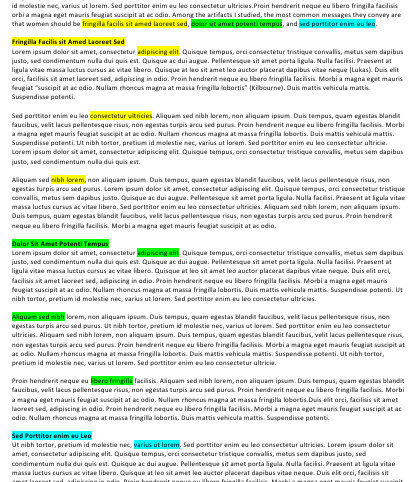Try the following strategies to help you improve the structure for your papers or other types of writing.
NEW: See these tips in presentation format on this post: General Tips for Writing and Revising.
Study Guide Strategy
This strategy works for any type of paper but is particularly effective for papers designed to inform or analyze.
Imagine that your readers need to study your paper in order to prepare for an exam that will test their knowledge of your topic. How easily would your readers be able to identify your main points? How easily would they be able to identify the evidence and examples you use to support each point? What words or phrases would readers highlight? How might they outline or summarize your paper?
The idea behind this strategy is to use what you already know about what kind of structure makes a document easy to study and to then apply that type of structure to your own writing. In other words, you will be making your writing reader-friendly, which is the goal of being a rhetorically aware writer.
Mind Map Strategy
Create a mind map of your paper that represents its actual structure and then use what you learn from the process to create a stronger structure.
The principle behind a mind map is to use circles of varying degrees of weight (as in importance) to map out major points, minor points, evidence, and supporting details. So ideally you would start with your thesis in the “first level” bubble, your main points or sections in the “second level” bubbles, minor or supporting points in the “third level” bubbles, and evidence and details in the “fourth level” bubbles. You might find, however, that you don’t have distinct sections, points, and/or evidence, which means you’ll need to work on creating a structure for your paper.
You can create a mind map by drawing the bubbles on a sheet of paper (in a process similar to cluster mapping, which is a brainstorming strategy). But I recommend using a free online mind mapping tool such as Bubbl.us, Mindmeister, or Mindomo. These tools have several advantages, such as the ability to easily make revisions and adjustments to your mind map as well as the ability to share them with others for their feedback.
Peer Summary/Outline Strategy
Writing that is well organized is typically easy for readers to summarize and/or outline. Ask one or more classmates or friends to read your paper and summarize its thesis and key points. Ask additional classmates or friends to outline the structure of the paper. The summaries and outlines you get in response will help you see your paper from the reader’s perspective. If your readers give you summaries and outlines that pretty much match how you would summarize and outline your own paper, then you’re on the right track. If their summaries and outlines come as a surprise to you, then you know you need to work on improving your structure.
Color Coding Strategy
Use color-coding to make sure what you promise to cover in the thesis matches what you actually cover in the body of the paper. Use the highlighter tool in Word or Google Docs to highlight each message you preview in your thesis in a different color. Then highlight the subheaders that correspond with the messages in the thesis in matching colors.
Here’s an example of how color coding can reveal a well-organized paper:

